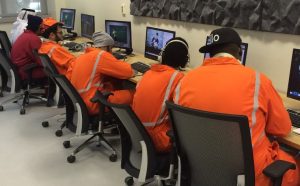
I was recently assigned the role of a full-time supply instructor in an English as a Foreign Language department of approximately 70 instructors. “Take this on as a new challenge” was my first thought, and I haven’t looked back. Our EFL department has two divisions. These are the academic and the technical preparatory programs. I had not yet taught in the technical program and was interested in these students with different needs. I had always been curious about the technical program and was anxious to jump right in and teach.
We have just completed midterms and I have had a generous sampling of most of the courses that our department offers. I have benefited from this experience in more ways than I had anticipated. I have continued to learn about my peers, technology integration, institutional facilities, and most of all the students. Here is a brief overview of the things I learned:
Technology integration
Our college supports education technical technology through an environment of well stocked and supported digital learning options. It is interesting to see the varying degrees to which technology is being used by the staff and students. Student behaviour often reflects their instructor’s education technology routines. When I direct the students to use some technology, their efficiency indicates whether or not they use technology on a regular basis. I have been very impressed by those teachers who have integrated technology seamlessly into their instructional practice.
There are core tools that are used with which students demonstrate competence in most classes. Some of these are Quizlet, Microsoft Word, Google Forms, Google Translate, Pixlr Editor, Microsoft PowerPoint, Kahoot, Spelling City and YouTube.
Teacher interactions
I have been able to meet and work directly with more than a score of my peers. It is a fantastic way to learn more about their teaching styles, challenges, perspectives, innovations and interpretation of the syllabi. Recently, I was fortunate enough to experience a self-reflection activity that was a part of a pilot test of an autonomous learning system. This framework was designed by one of my peers, and I might not have become aware of it had I not substituted for a week in her class.
Facilities familiarity
Moving among different rooms across the various twenty buildings on campus has allowed me to determine the advantages and weaknesses of instructional spaces. Factors include wireless strength, lighting, temperature, ambience, furniture and proximity to conveniences such as washrooms and cafeteria services. Learning the geography of a campus opens up potential opportunities. Various departments host events, both formal and casual, that are not communicated to the institution as a whole. Other gems such as dedicated labs with their unique resources can be leveraged in future projects. I recently discovered that some of the classrooms have document cameras. I am now using one of these to create high-resolution images and short videos for a technical course.
Student interactions
The best part of supply teaching has been being able to meet and work with students at all levels. It is more pleasant to walk around the campus and recognize scores of students with a friendly wave. I also have a real feel for the capabilities of students at the various levels at the college. This is very useful as a materials developer moving forward. I will be able to use this knowledge to create learning objects for multiple levels with more informed planning.
Overall perspective
I have benefited as a substitute instructor by gaining knowledge of the department and its various courses. This experience has made me feel more connected with the department, my peers and the students. In addition to recommending areas of possible improvement, I have identified good practices and hope to share some of these with workshops and job aids.
I was wondering if anyone else out there has had a similar experience. If you have, please share in the comment section below.

Very interesting & informative article regarding supply teaching. This brings a positive outlook on the subject of supply teaching.